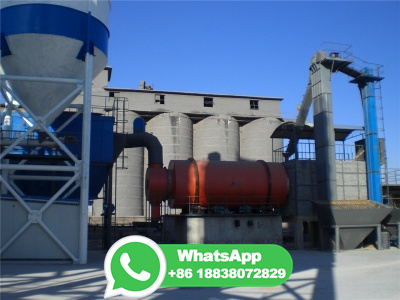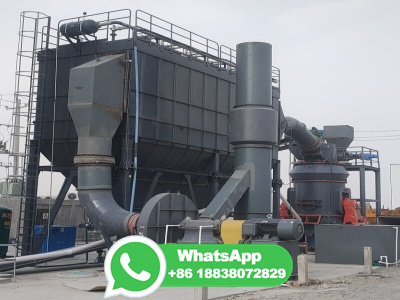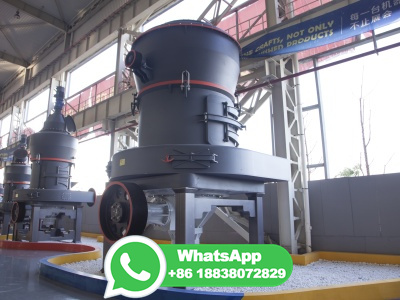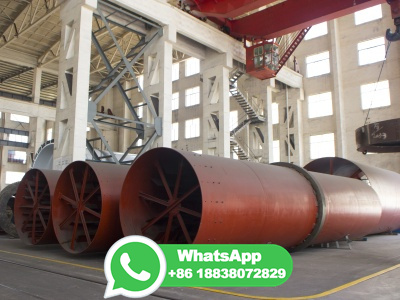
WEBRuhr100 process. coal gasifiion, any process of converting coal into gas for use in illuminating and heating. The first illuminating gas was manufactured from coal in England in the late 18th century by the process of carbonization or destructive distillation, heating coal in the absence of air, leaving a residue of coke as a byproduct.
WhatsApp: +86 18203695377
WEBIn order to convert coal to graphite, first coal is digested (bituminous coal only) ... The side doors are installed again and the process repeated. Coke batteries are operated nearly contmuously to remain productive over their life span of 20 to 30 years. Petroleum cokes, on the other hand, represent the second largest source of consumable ...
WhatsApp: +86 18203695377
WEBJan 1, 1994 · article{osti_869196, title = {Process for converting coal into liquid fuel and metallurgical coke}, author = {Wolfe, Richard A and Im, Chang J and Wright, Robert E}, abstractNote = {A method of recovering coal liquids and producing metallurgical coke utilizes low ash, low sulfur coal as a parent for a coal char formed by pyrolysis with a .
WhatsApp: +86 18203695377
WEBOct 19, 2023 · Coal is a black or brownishblack sedimentary rock that can be burned for fuel and used to generate electricity. It is composed mostly of carbon and hydrocarbons, which contain energy that can be released through combustion (burning). Coal is the largest source of energy for generating electricity in the world, and the most abundant fossil fuel ...
WhatsApp: +86 18203695377
WEBThe conversion of coal into coke for the smelting of iron was first attempted in England in the 18 th century. Before this time, ironmaking utilized large quantities of charcoal, produced by burning wood. ... and the coke was sprayed with water to stop the baking process. Last, the coke was lifted out with a fork, loaded into wheelbarrows, and ...
WhatsApp: +86 18203695377
WEBJan 2, 2015 · Coke and iron ore, along with other minerals, are heated in a furnace to make iron. Following are the two methods used to convert molten iron to steel: Basic oxygen furnace (or BOF). The BOF ...
WhatsApp: +86 18203695377
WEBJun 1, 2016 · To control the coking system more precisely, it is reasonable to monitor the parameters that influence the coal to coke conversion. This process depends on the heat transfer through a heating wall. In addition, both the heat flux and the temperature field in the wall determine the coke quality, ceramic wall service life and COG consumption.
WhatsApp: +86 18203695377
WEBCoke is dense, black and has high carbon content, lending to its high calorific value – about 6,000 BTU per pound. Coal is a good fuel as it produces a lot of heat when burned. It has a calorific value of around 3,800–5,500 BTU per pound. Coke contains a higher ash content than coal, which makes it less valuable as a consumer product.
WhatsApp: +86 18203695377
WEBJan 1, 2013 · More attention is paid to ironmaking as the most energy consuming segment of the process chain. For example, blast furnace ironmaking including sintering and coking plants consumes about 6575% of the entire energy at an integrated steelworks (ca. 11–12 GJ/t hot metal) (Babich, 2009).Both direct and indirect coal use, in the form of coke, .
WhatsApp: +86 18203695377
WEBJan 5, 2023 · Chemicals from Coking Metallurgical Coal. Most of the chemicals derived from coal come from byproducts produced during the coking process. Coal is used to make coke to make steel. Coke gas (also called foul gas) contains coke tars, ammonia, and light oils. Tars are recovered and used to make tar derivatives. Ammonia is .
WhatsApp: +86 18203695377
WEBJan 1, 2019 · Coke types. Three main types of coke are produced from coking coals (Coal Technology, 2017) as follows:Metallurgical coke is produced in coke ovens and is mainly used for the iron ore reduction in blast furnaces (BFs). It is also consumed in blast and electric furnaces for ferroalloy production and for the reduction of .
WhatsApp: +86 18203695377
WEBA coke oven is a hightemperature industrial oven designed to convert coal into coke through a process known as pyrolysis. The oven operates in a controlled atmosphere and transforms coal into coke by heating it at extreme temperatures of around 2000 degrees Fahrenheit. Coke ovens are a complex system, involving several stages to ensure the ...
WhatsApp: +86 18203695377
WEBQuestion 18 (a) The slow process of conversion of dead vegetation into coal is called ___. (b) Coal and petroleum are formed from the dead remains of organisms and are known as ___. (c) The black thick liquid with ___ smell is known as coal tar (d) During the processing of coal to get coke, coal tar and ___ are also obtained. (e) The process of .
WhatsApp: +86 18203695377
: Changes to Iron Production. Technological advancements in metallurgy, most notably smelting with coal or coke, increased the supply and decreased the price of iron, aiding a number of industries and making iron common in the rapidly growing machinery and engine sectors.
WhatsApp: +86 18203695377
WEBCoke and Coal. By distilling bituminous coal in retorts to obtain gas for illumination, or by burning it in kilns or pits, the residue left behind is called coke, which is simply coal charcoal ...
WhatsApp: +86 18203695377
WEBIn converting coal into coke, the coal is heated aerobically at high temperature. What other products are eliminated from the coal in this process? Coal gas, coal tar, and water. About us. About Quizlet; How Quizlet works; Careers; Advertise with us; Get the app; For students. Flashcards; Test; Learn;
WhatsApp: +86 18203695377
WEBFeb 1, 2017 · Semantic Scholar extracted view of "Coke oven gas to methanol process integrated with CO2 recycle for high energy efficiency, economic benefits and low emissions" by Minhui Gong et al. ... Methanol is predominantly produced by a coaltomethanol process in China. However, this process is criticized by high CO2 emissions .
WhatsApp: +86 18203695377
WEBHence, fossil fuels are present in limited quantities and are exhaustible. Coal, petroleum, natural gas, etc., are examples of fossil fuels. Steel is an alloy of iron and the formation of steel requires carbon (typically in the form of coke). 2. The slow process of conversion of dead vegetation into coal is called _____. A. decomposition. B ...
WhatsApp: +86 18203695377
WEBNov 10, 2023 · By using coal or coke as a carbon source and blast furnace top gas as the gasifiion agent, a reducing gas is produced for iron ore containing 50% CO and 16% hydrogen in the state of ...
WhatsApp: +86 18203695377
WEBMetallurgical coal or coking coal [1] is a grade of coal that can be used to produce goodquality coke. Coke is an essential fuel and reactant in the blast furnace process for primary steelmaking. [2] [3] [4] The demand for metallurgical coal is highly coupled to the demand for steel. Primary steelmaking companies often have a division that ...
WhatsApp: +86 18203695377
WEBSiC is one of the main intermediate compounds formed during the industrial production of silicon (Si). In the Si process, SiC is produced when carbon added to the raw materials reacts with the silicon monoxide gas (SiO(g)) formed in the furnace. Carbon materials used are either biomassbased (charcoal and wood chips) or based on fossil sources (coal, .
WhatsApp: +86 18203695377
WEBFeb 8, 2021 · Coal due to its relatively large quantities and wide distribution worldwide has generated renewed interest in research and development with the aim of establishing coal conversion technologies that are technically reliable, environmentally and economically feasible. It has proved to be a prominent energy source in emerging markets with .
WhatsApp: +86 18203695377
WEBIn 2022, coal accounted for about % of electricity generation. Coal use by industry. Many industries use coal and coal byproducts. The concrete and paper industries burn large amounts of coal to produce heat. The steel industry uses coal indirectly as coal coke to smelt iron ore into iron to make steel. The high temperatures created by ...
WhatsApp: +86 18203695377
WEBCoke is produced in the coking ovens and is then used with limestone to extract iron metal from ironcontaining ores in the blast furnace. Coke is a form of almostpure carbon that is produced from coal rocks. It is produced by heating coal rocks to a .
WhatsApp: +86 18203695377
WEBMay 29, 2024 · Coal is an abundant natural resource that can be used as a source of energy, as a chemical source from which numerous synthetic compounds (, dyes, oils, waxes, pharmaceuticals, and pesticides) can be derived, and in the production of coke for metallurgical is a major source of energy in the production of electrical .
WhatsApp: +86 18203695377
WEBHTC is a thermochemical conversion process for biomass to yield a solid, coallike product. ... in the process of the filler coke preparation and in the carbonization of the binder pitch in the formed blocks. ... The degradation of the coal (or any carbonaceous feedstock) is severe at these temperatures and produces (in addition to the desired ...
WhatsApp: +86 18203695377
WEBJan 1, 1989 · Summary. This Chapter is principally concerned with the major topics associated with the conversion of coal to coke. Only a limited range of coal rank the bituminous coals, produce acceptable metallurgical cokes. The history of coke making is briefly reviewed followed by description of a coke battery and the byproducts of coking.
WhatsApp: +86 18203695377
WEBMay 7, 2021 · Packaged with carbon sequestration and utilization, coalderived hydrogen could help meet the world's emissions targets by greg kelsall, principal associate, iea clean coal centre Editor's note: In the effort to control emissions, hydrogen has emerged as a promising carbonfree energy carrier. Few realize that much of the world's hydrogen is .
WhatsApp: +86 18203695377
WEBJul 16, 2010 · Turning coal into coke, a raw material used in steelmaking, is a complied and dangerous process, as evidenced by the explosion Wednesday that injured 20 people at the country's largest coke plant. But those familiar with the industry say it .
WhatsApp: +86 18203695377
WEBThe slow process of conversion of plants into coal is calledcarbonization. (a) The slow process of conversion of dead vegetation into coal is called ___. (b) Coal and petroleum are formed from the dead remains of organisms and are known as ___. (d) During the processing of coal to get coke, coal tar and ___ are also obtained.
WhatsApp: +86 18203695377